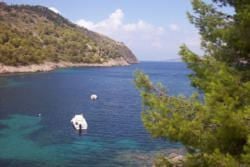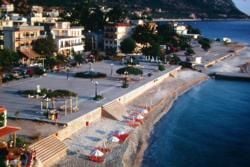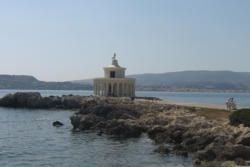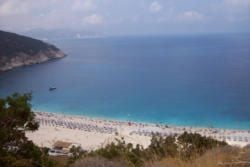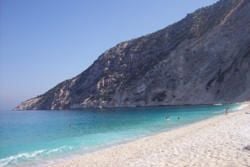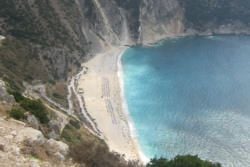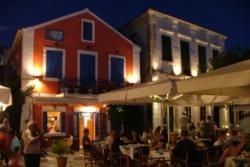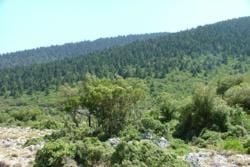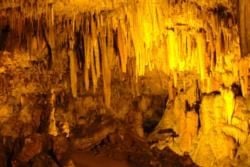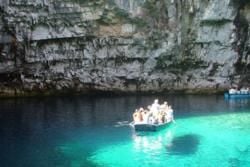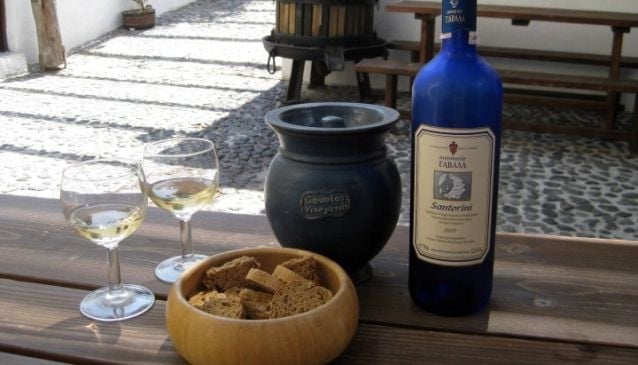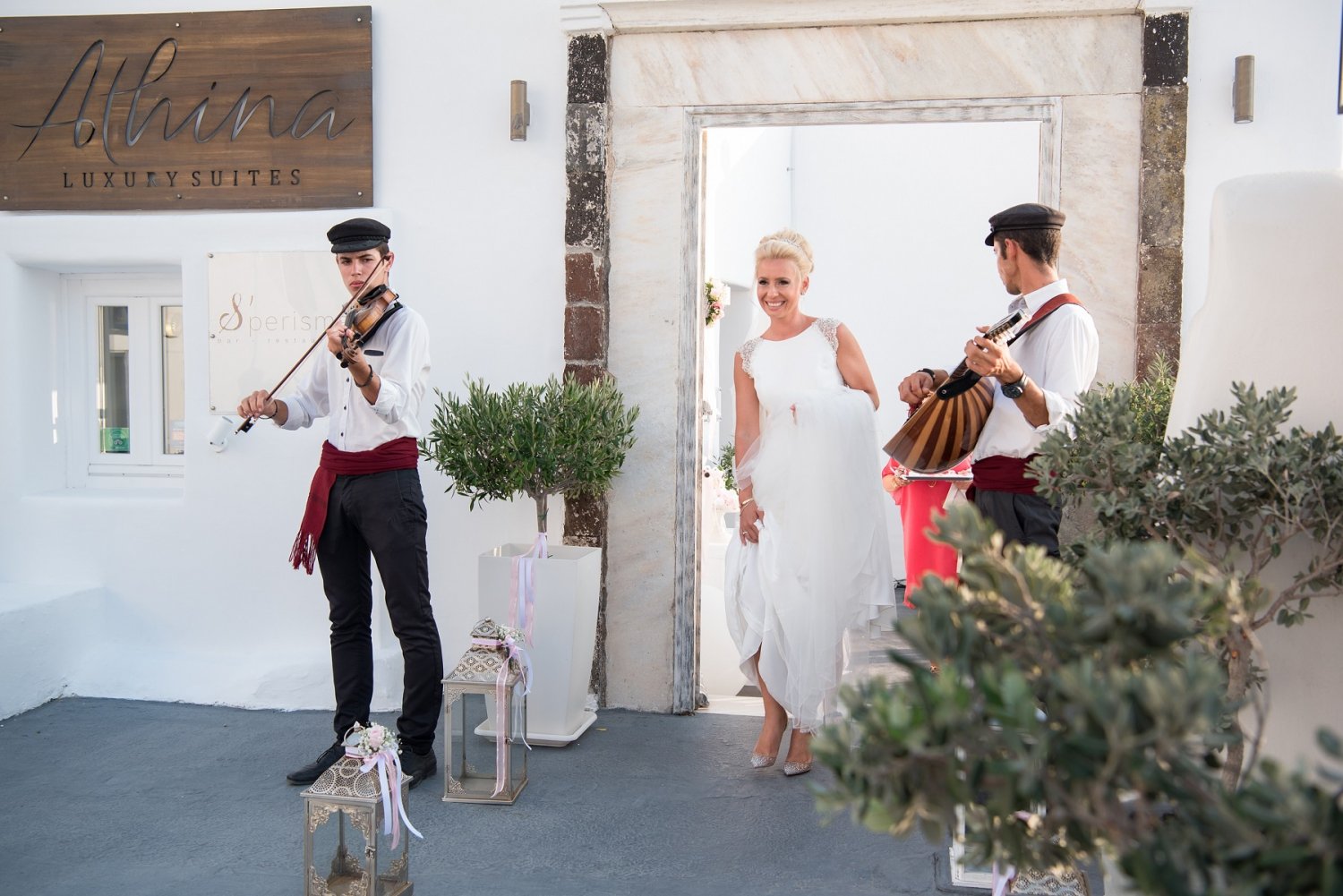Kefallonia

It is the biggest island of the Ionian Sea, with the largest number of sunny days per year in Greece.
But these are not the reasons why Kefallonia is one of the most attractive destinations. Its magnificent sights, amazing beaches, monuments, castles, remote monasteries and cheerful, hospitable people are the hidden treasures of this unique place. The movie ââCaptain Corelliâs Mandolinââ being shot in this natural scenery, contributed to the islandâs promotion in every corner of the world.
The island has a splendid natural beauty and a diversified geological structure blended harmoniously with the unique charm of its inhabitants and their Eastwind culture; transferred and seen in their architecture, literature, and customs/habits of its people. Surrounded with innumerable small bays and rich vegetation, up to the mountain of Aenos (the highest in the entire Ionian with more than 1600 meters) looking impressive long before even approaching the island.
From Argostoli to Lixouri, and from Sami to Poros, since the very first moment, a visitor can see that something different in the atmosphere of the island, either this could be an Arietta being sung, or the shrewdness of character that distinguishes each Cephalonian.
Argostoli is the capital of Kefallonia since 1757. It is a modern town, which preserves its traditional character, built amphitheatrically with a view at the Koutavous lagoon, an important crossing area for the migratory birds. As a modern resort, it offers together with Lixouri (the neighbour town) services like organised beaches, a variety of restaurants, shops, cafés and nightlife. Itâs worth a stroll in the pedestrian street with all the shops, or a walk around the wonderful neoclassical buildings, big squares, churches and remarkable cultural activity.
What to see in Argostoli:
- The Archaeological Museum exhibiting important findings discovered in the whole island, mainly dating back to the Mycenaean period.
- The Korgialeneios Library, one of the biggest libraries in Greece, housing more than 55,000 volumes and a great collection of Byzantine icons.
- The Folklore and History Museum. It hosts exhibits associated with the history of the island (costumes, weapons, heirlooms etc.) and many every-day life objects.
- Walk at the central and spacious Valianos square with the statue of the benefactor P. Vallianos, many cafés, restaurants and bars, the Lithostroto, the central street with commercial stores and many meeting points; or the Kampanas square, offering an amazing view of the town and the Koutavou Lagoon.
- The Napier Garden. It was named after the British Governor Napier, which despite its limited space has an interesting variety of trees.
- The Rizospaston street, with palm trees and the monument to radical revolutionaries.
- The 900 meter long Drapano stone bridge built by the English in 1813 in order to connect Argostoli to the opposite coast.
- The Katavothres. They are caves, where the sea waters enter and pass through them reaching Sami at the other side of the island after a 14 day journey. The Aghioi Theodoroi lighthouse at the end of the peninsula of Lassi, where the sunset is majestic. The "Vinaries Wine Storehouse", in "Thalassomylos", hosting an exhibition of wine and local products.
Lixouri is only 3 km away from the capital. Is full of houses bedecked in flowers and greenery, beautiful squares, cafes and major churches. Its reputation is based on the intelligence, its openhearted and sensitive residents, with their particular sense of humour. Donât leave without seeing the two city Libraries, and the Folk Museum housed in an old traditional mansion.
You will find numerous hotels and inns, restaurants or charming cafés and several bars to have a drink at night.
In the area near Lixouri (on the same peninsula) are many beautiful beaches, as Platia Ammos on the road to the Kamiranata village, the Xi, and the Megas Lakos (Great Pit) located in the south of Lixouri and its length exceeds 5 km. Within walking distance there is the beach of Vatsa, while one of the most famous ones is Kounopetra. It took its name from the rock that was moving rhythmically in the sea, a phenomenon which was stopped after the 1953 earthquake. On the north side, you should visit the Petani beach.
Starting from Argostoli to the southernmost point of the island, the seaside town of Skala, you will find the sandy beaches of Makris Gialos and Platis Gialos, wander among cosmopolitan resorts, taverns, shops, bars and all turquoise or crystal blue waters.
Moving north, most of the eastern seaside (all the way till Kountourata) is the retreat of the Caretta-Caretta turtles and the Mediterranean monk seals of Monachus-Monachus.
When passing the little harbour of Sami, turn left at Agia Efimia, and cross the island towards its western side. The first to see, and one of the most famous in the entire Greece, is the beach of Myrtos. During August it wonât be easy to find a parking spot, but its fame and the fact of being awarded (many times) either internationally or annually with the blue locally, mean that is worth trying. The scenery from above is unique with green rocks that result in a fairly long beach with white pebbles. The turquoise waters and certainly with or without wave will make your time on the beach unforgettable. It is well organised and you will find everything necessary to enjoy a swim, sunbathe, or the beach bar. Do not leave until you see the sunset, it is a unique experience.
Taking the road north to Fiskardo, and within a few kilometres, will find the sign to Assos. It will drive you to the beautiful peninsula and bay of a picturesque village, with a beautiful castle at its end. Prepare your camera because the scenery is unique and among the best in Kefallonia.
Continuing your drive a bit longer, passing through small villages and countryside, you will end at the famous village of Fiskardo.
This is the only place on the entire island that was not damaged on the strong earthquake of 1953. This is the main reason it still maintains unchanged its picturesque Ionian architecture of the 18th and 19th century.
I personally could spend the entire day on the village, walking through the tiny and colourful alleys, or its coastal road. There are so many cafés to rest, restaurants (like Tassia) and cute little shops to buy a souvenir. The quality pervades the space, with its many colourful sailing boats and yachts, reminiscent of cosmopolitan centres abroad. Discover through the pine forest the two lighthouses (the old and the new) perhaps a dive in the clear waters, and if you are there late in the afternoon, you must not miss the sunset from that spot. With a clear atmosphere (if you are lucky) you will admire the sun diving in the waters of Adriatic.
Mount Ainos is well known not only for its altitude but also due to its dense forest of Kefalonian fir trees (Abies cephalonica), which dominate at the upper altitudes. The area has been designated as a National Park.
The fir forest of Mount Ainos as an ecosystem and as a natural heritage is of particular significance in the genetic pureness of the species Abies cephalonica. Mount Ainos is important from a bio-geographical point of view since on its slopes and peaks endemic plant species can be found.
Drogarati cave (3km away from Sami) was discovered 300 years ago, due to the strong earthquake. It's 60 meters bellow ground, with a steady temperature of 18o Celsius and 90% humidity. Considered one of the best caves in Greece and is the only one with such a large room (dimensions 65 x 45 and height 20 meters), where the main hall, decorated with stalactites and stalagmites, has excellent acoustics and is periodically used for concerts (up to 500 people) adding a specially designed platform.
Limnospilaio Melissani cave is a unique geological phenomenon located 2 km northwest of Sami. The natural entrance of the cave is vertical and was created by the collapse of a section of roof. But there is also artificial entrance with stairs to allow the visit to the cave. The lake below the surface is approximately 160 meters and the depth of the water ranges from 10 m to 40 m. Stalactites (20,000 years old) adorn most of the cave. Small boats offer a magnificent tour around the cave and its little island, just in the middle.
- The island is connected by ferry to Patras, Igoumenitsa, and Astakos.
- You can reach Kefallonia by aeroplane from Athens and Thessaloniki
| ARGOSTOLI SERVICES | PHONE NUMBER |
| Municipality | +30 26710-22230 |
| Airport | 26710-29900 |
| Police | 26710-23333 |
| Port Police | 26710-22224 |
| Hospital centre | 26710-24641 |
| Taxi | 26710-28545 |
| Local buses (KTEL) | 26710-22276 |
| Archaeological Museum | 26710-28300 |
| Folklore and History Museum | 26710-84400 |
| Korgialeneios Library | 26710-22584 |
| LIXOURI SERVICES | PHONE NUMBER |
| Police | 26740-22031 |
| Medical centre | 26710-22222 |
| Iakovatios City Library | 26710-91325 |


